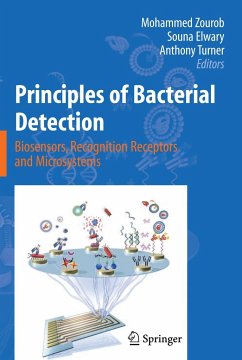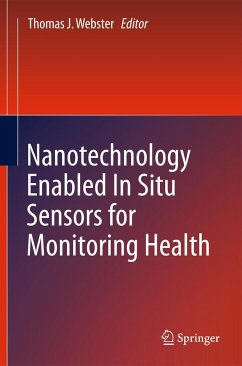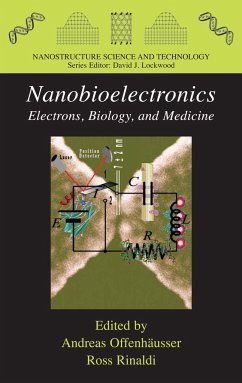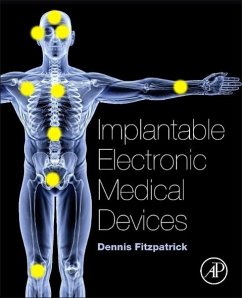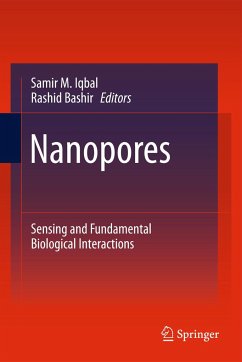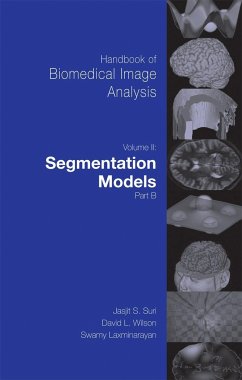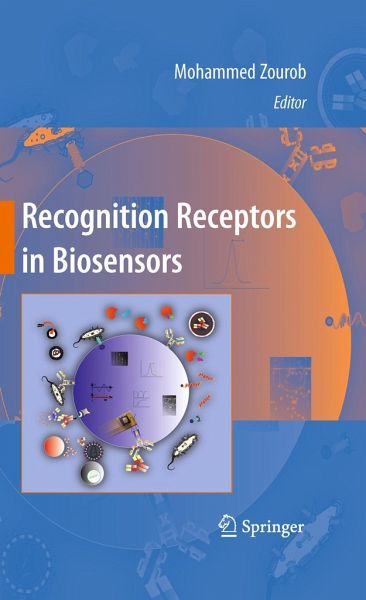
Recognition Receptors in Biosensors

PAYBACK Punkte
76 °P sammeln!
This book will cover most of the up-to-date recognition receptors technologies used in biosensors. Since this book is written by the world's most renowned and learned scientists in their own area of expertise, we believe that the calibre of the finished product will be as renowned as their reputation. To the best of the editor and author's knowledge this book is a first in this field. We will aim to cover this increasingly hot area of research especially in relation to the new biosensing techniques.
Most of the universities are teaching the recognition receptors topics in the Biosensors, separation and Microsystems courses. However, there is no single reference book that covers this interesting area. So the aim of this book is to be a textbook for the undergraduate and graduate student upwards, and an important reference for the professionals working in different fields including biomedical, natural sciences, physical sciences, and nanotechnology, m-TAS, veterinary, food QA, bioterrorism and security as well as health surveillance.
The book will cover the different recognition receptors used up-to-date in the different sensing transducer and microarrays platforms. It will cover the background, theory behind each technology, state-of-the-art review for all the new technologies used in biosensing in detail. Strategies and future prospectus are suggested at the end of each chapter for developing future technologies to achieving a better sensitivity, stability and swifter biosensing detection.
Most of the universities are teaching the recognition receptors topics in the Biosensors, separation and Microsystems courses. However, there is no single reference book that covers this interesting area. So the aim of this book is to be a textbook for the undergraduate and graduate student upwards, and an important reference for the professionals working in different fields including biomedical, natural sciences, physical sciences, and nanotechnology, m-TAS, veterinary, food QA, bioterrorism and security as well as health surveillance.
The book will cover the different recognition receptors used up-to-date in the different sensing transducer and microarrays platforms. It will cover the background, theory behind each technology, state-of-the-art review for all the new technologies used in biosensing in detail. Strategies and future prospectus are suggested at the end of each chapter for developing future technologies to achieving a better sensitivity, stability and swifter biosensing detection.
Recognition receptors play a key role in the successful implementation of chemical and biosensors. Molecular recognition refers to non-covalent speci?c binding between molecules, one of which is typically a macromolecule or a molecular assembly, and the other is the target molecule (ligand or analyte). Biomolecular recognition is typically driven by many weak interactions such as hydrogen bo- ing, metal coordination, hydrophobic forces, van der Waals forces, pi-pi interactions and electrostatic interaction (due to permanent charges, dipoles, and quadrupoles) the polarization of charge distributions by the interaction partner leading to ind- tion and dispersion forces, and Pauli-exclusion-principle-derived inter-atomic repulsion, and a strong, "attractive" force arising largely from the entropy of the solvent and termed the hydrophobic effect. In recent years, there has been much progress in understanding the forces that drive the formation of such complexes, and how these forces are relate to the physical properties of the interacting molecules and their environment allows rational design of molecules and materials that interact in speci?c and desired ways. This book presents a signi?cant and up-to-date review of the various recognition elements, their immobilization, characterization techniques by a panel of dist- guished scientists. This work is a comprehensive approach to the recognition receptors area presenting a thorough knowledge of the subject and an effective integration of these receptors on sensor surfaces in order to appropriately convey the state-of the-art fundamentals and applications of the most innovative approaches.




